Whether you’re dreaming of sipping rosé on the Cote d’Azur or skipping through fairytale-like villages, any trip to France starts with a rendezvous with the weather forecast to decide the best time to visit France.
France is a huge country – roughly the same size as Texas – with flat pastures and rolling hills rising to snow-capped mountains. Multiple climate zones govern the weather in France, and sub-climates mean conditions vary in each region’s departments and cities.
The best time to visit France varies greatly and depends on the type of vacation you have in mind. There’s no right or wrong time to visit France as all months carry pros and cons – it’s mainly pros, though.
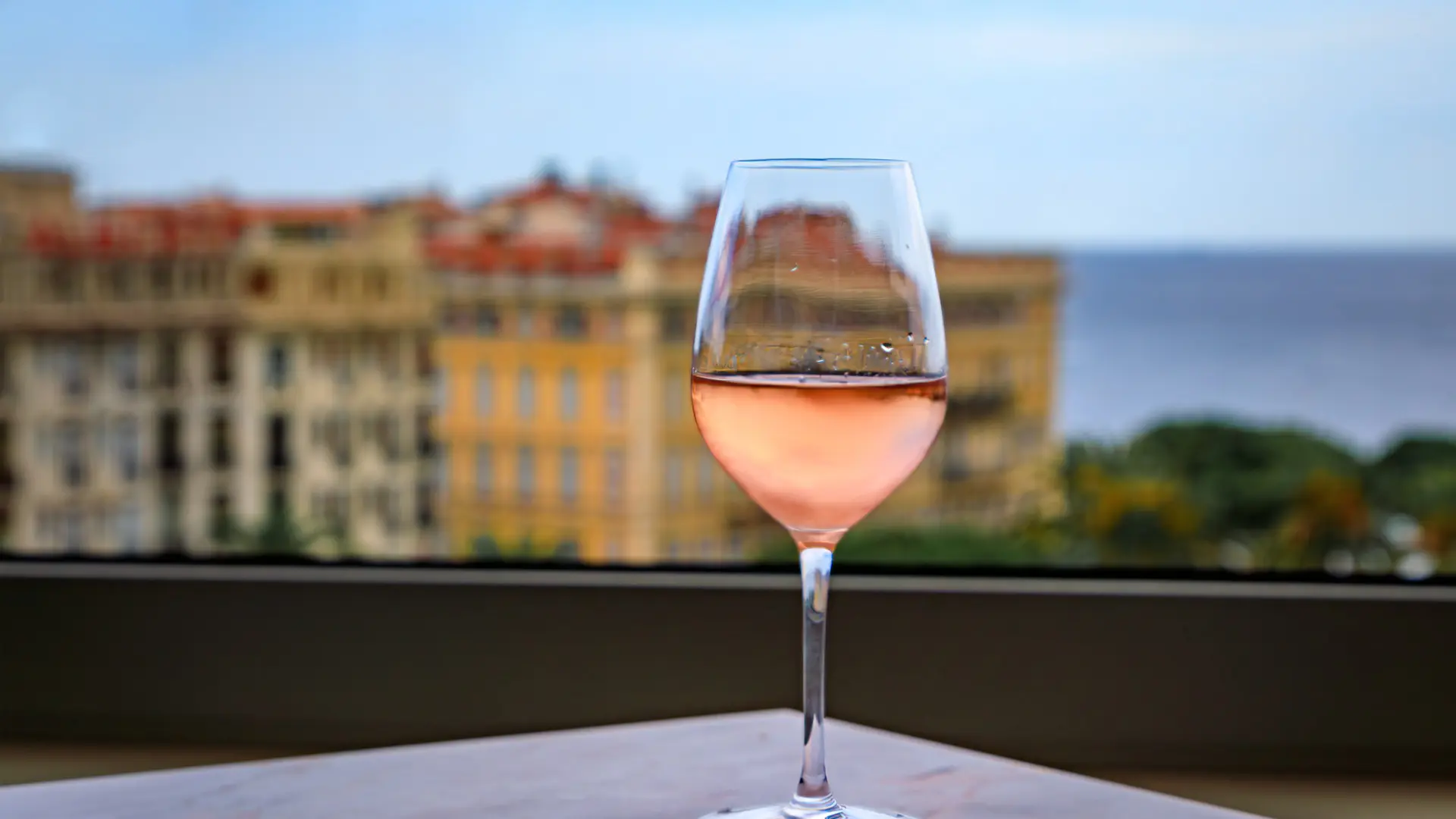
Jump to a section of this article
The Best Time To Travel To France at a Glance
France is a year-round destination. Those same alpine regions offering winter sports flip into hiking and biking centers in the summer months. Travelers rush to the French Riviera’s beautiful beaches in summer but find them no less enchanting under the winter sun.
- Best time to visit French cities: Paris, Bordeaux, Nice, and Lyon have four-season appeal although smaller cities are sleepier in low season.
- Best time to visit France for cultural events: festivals and exhibitions occur all year with a lull in January.
- Best time to tour French chateaux and villages: conditions are best between April and late October.
- Best time for hiking: mid-spring, early summer, and late fall provide optimum conditions.
- Best time for beaches: the sea is swimmable from late May or early June until late September.
- Best time to visit France for wine: fall is for harvest events but spring and summer are better for tastings at smaller estates in the finest wine regions. Cellars are stocked all year, naturally.
- Best time to visit France for food: French gastronomy is guided by the seasons and it’s impossible to be disappointed by any Plat du Jour. Food tours and experiences are available all year.

An Overview of The Weather & Climate in France
France is generally divided into oceanic, Mediterranean, and mountain climate zones.
The oceanic climate refers to the northern and western coastlines of Brittany, Normandy, and Nouvelle-Aquitaine. These areas experience temperate winters and summers and are prone to rainfall. Paris – and the wider Ile-de-France – sees hotter summers, prone to humidity.
The Mediterranean climate brings mild winters and hot summers to the south of France, southeast France, and Corsica. Winters in coastal Provence and the French Riviera dip to 39°F while summers can soar into the 90s.
The Alps, Pyrenees, and Massif Central ranges enjoy a winter wonderland of thick snow, bluebird skies, and freezing temperatures followed by refreshing summer conditions. France’s ski stations transform into hubs for hiking, biking, rafting, and climbing once the snow melts.
Late spring (May) through mid-fall (October) are ideal for visiting rural and urban destinations with July and August being the busiest and hottest months.
Allons-y, let’s take a closer look at the best time to travel to France by season.
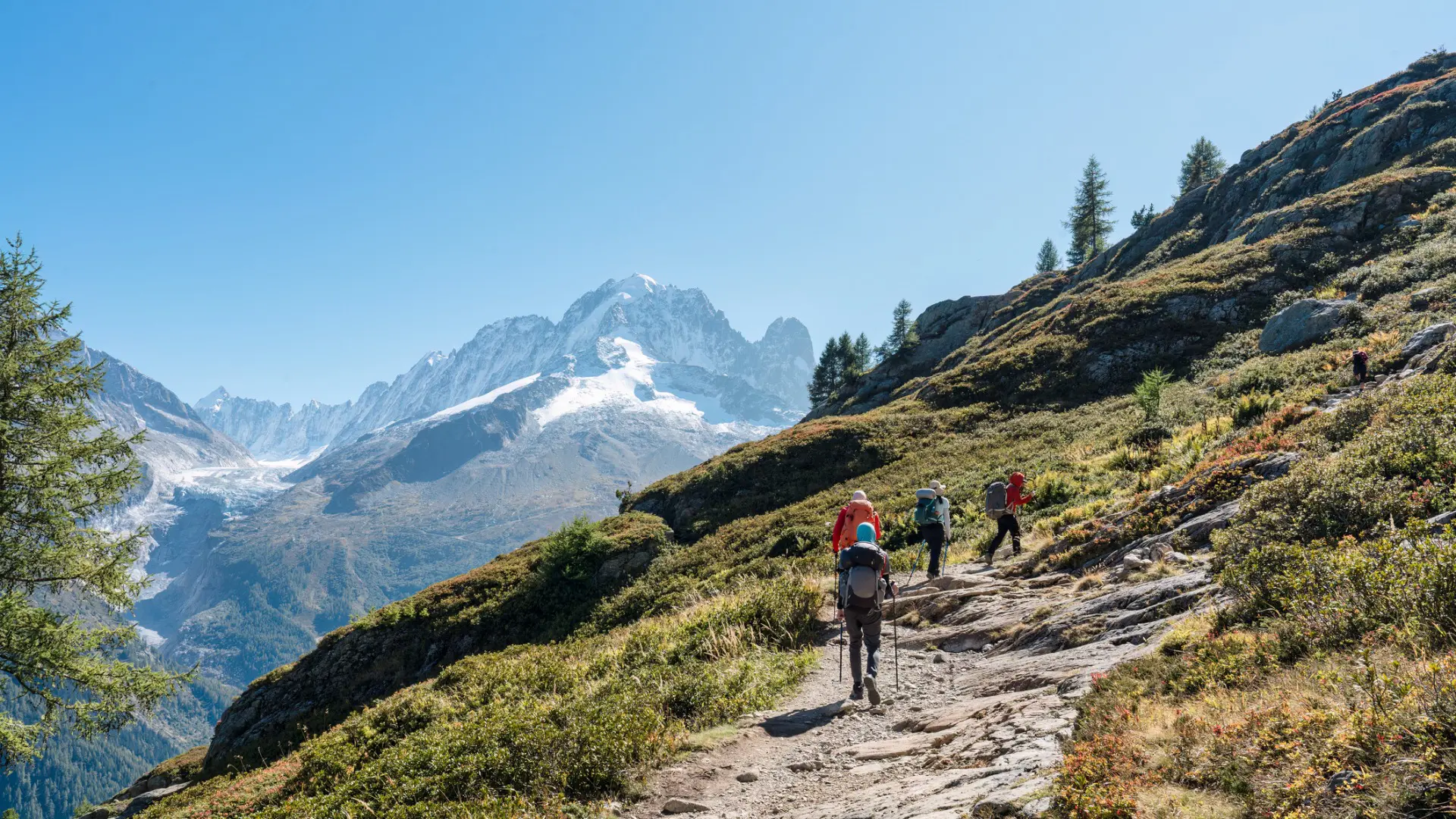
Spring Is The Best Time To Visit France For Flowers, Rural Wonders & Chateau Tourism
Spring is a transitional time in France where frosty mornings can give way to sunny afternoons. Unstable weather patterns may deter some travelers but the season of new beginnings brings a wealth of vacation styles ranging from flower viewing and hiking to late-season skiing.
March in particular may feel in the clutch of winter one day and bring a preview of summer the next. April is famously erratic with showers affecting all regions and heavier precipitation on the northern coast. It may sound annoying but you can thank the rain for all those glorious wildflowers and garden spectacles.
Enjoy Blossoming Urban Parks
Urban parks burst to life from the first day of spring while cherry blossoms bloom in Paris from late March until the middle of April. May is a wonderful time for a mix of the great outdoors, indoor culture, and local festivals. Temperatures settle at between 50°F and 68°F.
On the whole, spring tourism orbits around galleries, chateaux, and bucolic villages. Palaces and museums lengthen their hours and seasonal attractions reopen after winter closures.
Seize the opportunity to visit historic attractions before peak season kicks in – spring is the best time to visit France with fewer crowds than in summer or early fall.
Visit at Easter time for Sweet Treats
Easter – or Pâques in French – is a great time for traditional foods and the sweetest of treats. Never pass a Boulangerie or Patisserie without peeking at the window, and look for omelets and roasted lamb on bistro menus.
Late Season Skiing and Snowboarding
Spring is also worth considering for skiing and snowboarding. The ski season extends through March and late April in some parts.
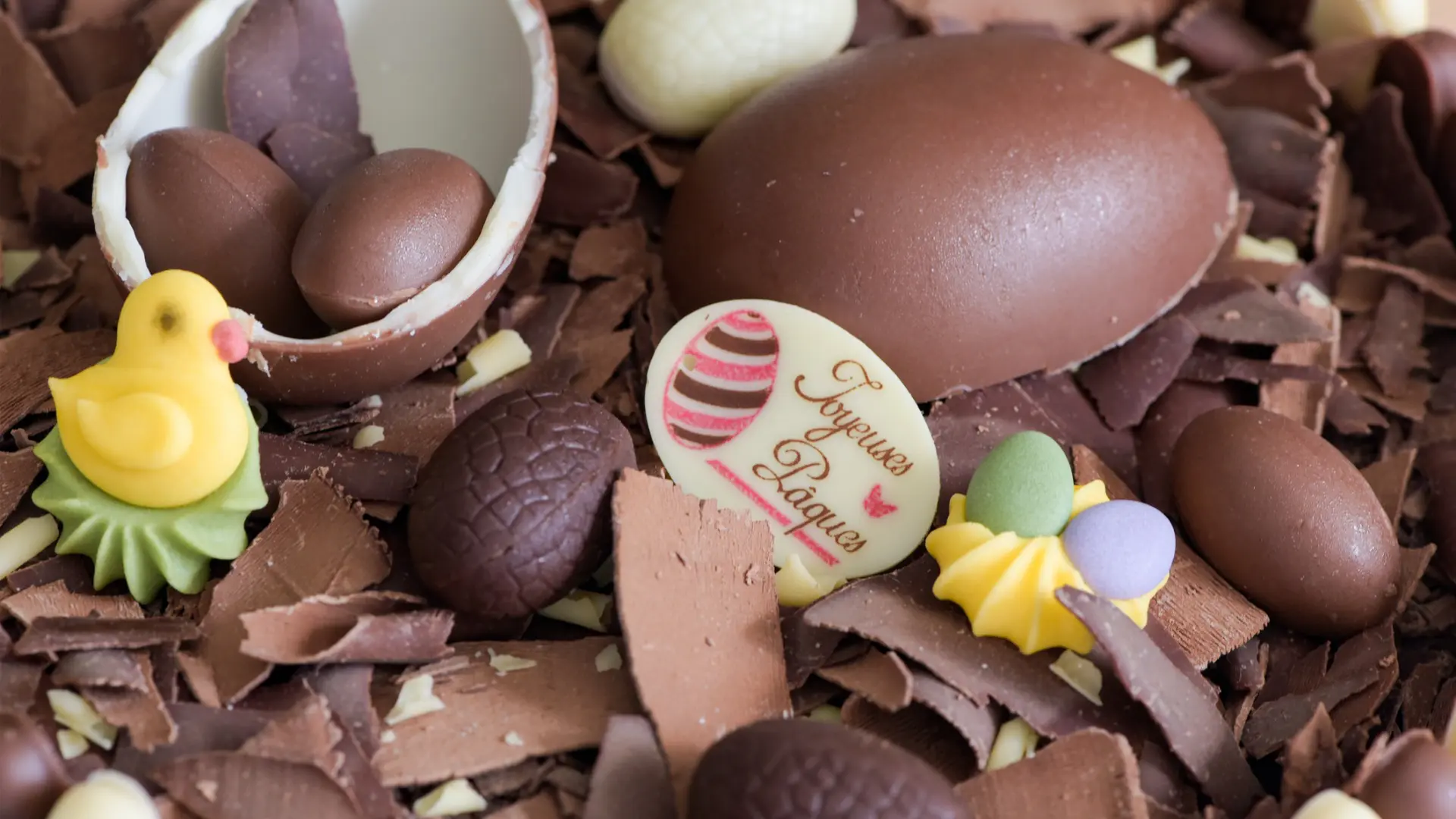
Best Places To Visit in France in The Spring
- Paris: the French capital is a destination for all four seasons with mid spring offering the best conditions for outdoor and indoor activities.
- Nice: held annually in February or March, Nice Festival sits alongside Rio and Venice as one of the world’s top carnivals in this beautiful Cote d’Azur resort.
- Loire Valley: cycle through the so-called Garden of France, stopping at cellar doors and majestic castles, such as Chateau de Chenonceau, Chateau d’Azay-le-Rideau, and Chateau de Chambord.
- Giverny: Monet’s Garden is primed with irises, tulips, peonies, and wisteria for its grand opening on April 1st.
- Carcassonne: this fortified city offers a rich experience for history buffs and fine diners through its UNESCO-designated towers and Michelin-starred restaurants.
- Provence: Avignon and the charming Provencal villages of Aix-en-Provence, Saignon, Eze, and Fontaine-de-Vaucluse emerge from winter hibernation with floral displays, food and wine festivals, and craft markets.
- Cannes: piggyback on the Cannes Film Festival at public cinema screenings and get a preview of summer in the glitzy French Riviera.
- Toulouse: dine en plein air in the Pink City and consider a day trip to Bessieres for the Giant Omelet Festival.
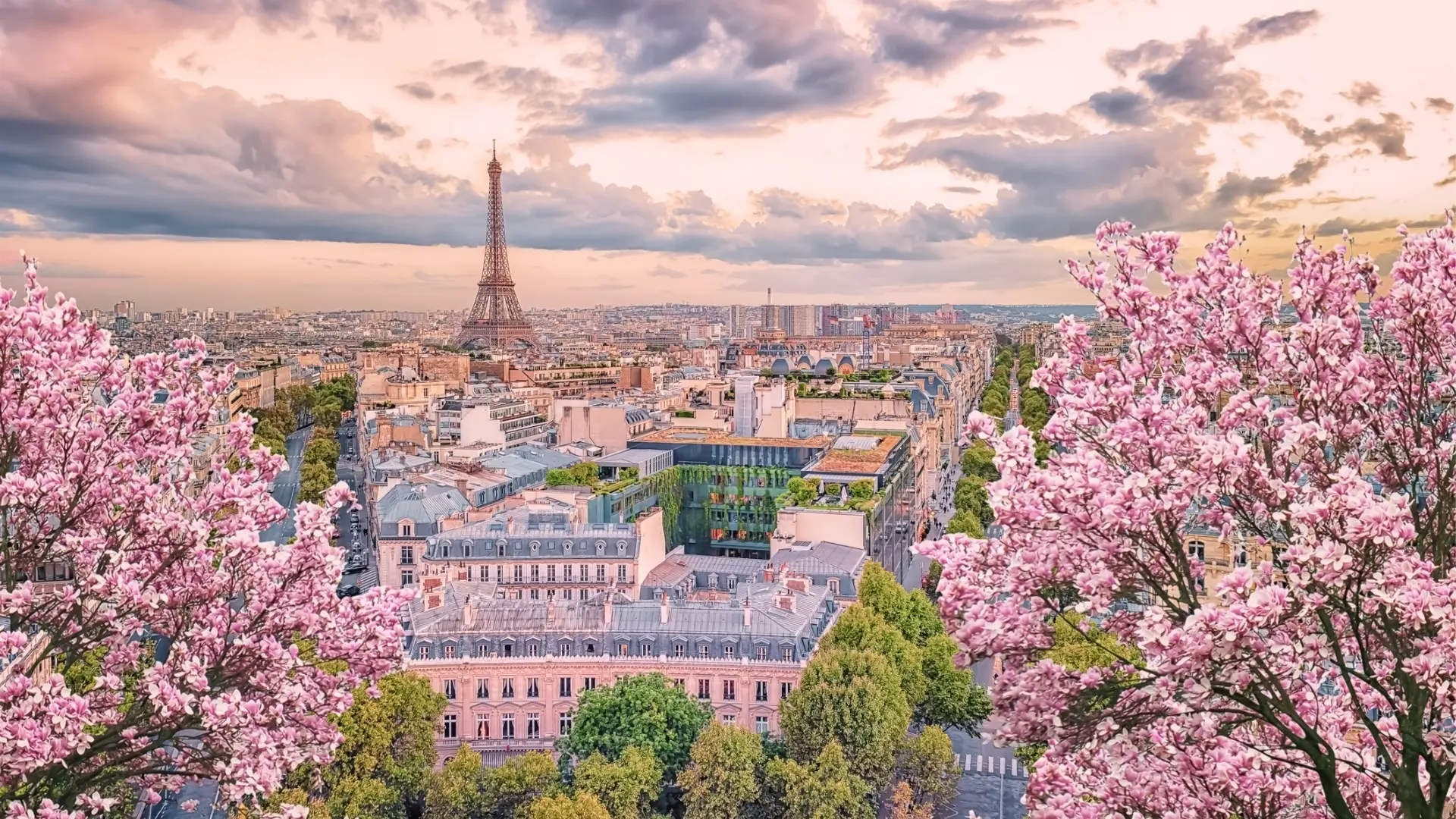
Summer Is When To Visit France For Beaches & Lavender Fields
June marks the start of summer in France with temperatures inching toward daily averages of 75°F. Minimal rainfall and ample daylight hours make it easy to experience the Joie de Vivre.
July and August averages edge toward the early 80s with heatwaves nudging parts of southern and inland France into the 90s. This can be pleasant for a relaxing beach vacation although high temperatures can hinder sightseeing.
We’ll help you skip the line or book guided tours to skip the crowds
That said, tourists don’t seem to be deterred by high temperatures as main landmarks are packed. If you’re traveling with JayWay, though, you don’t have to worry. Your trip planners will ensure skip-the-line tickets to the most popular attractions or – even better – book top-rated guided tours for you.
Marvel at Provence’s Lavender Fields
Summer is the season for marveling at lavender fields in Provence – but timing is of the essence. Valensole is usually the first region to turn purple, usually at the end of June or early July. Sitting at higher elevations, the lavender blooms later in July in Pays de Sault and Luberon.
Head South for Heat, North for Comfort
Southern France is the epicenter of summer tourism, with tourists flocking to the glittery resorts of Saint-Tropez, Cannes, and Antibes. If you’d prefer to escape the crowds and blistering heat, head to the northern coast for more favorable conditions.
Gushing rivers and wildflower pastures provide gorgeous hiking conditions in France’s mountains and national parks. However, July and August can be busy when city residents take their summer leave and the relentless midday sun does make planning important.
Bastille Day occurs every year on 14 July. Paris puts on the ritziest parades and most dazzling pyrotechnics but France’s national day is celebrated nationwide.
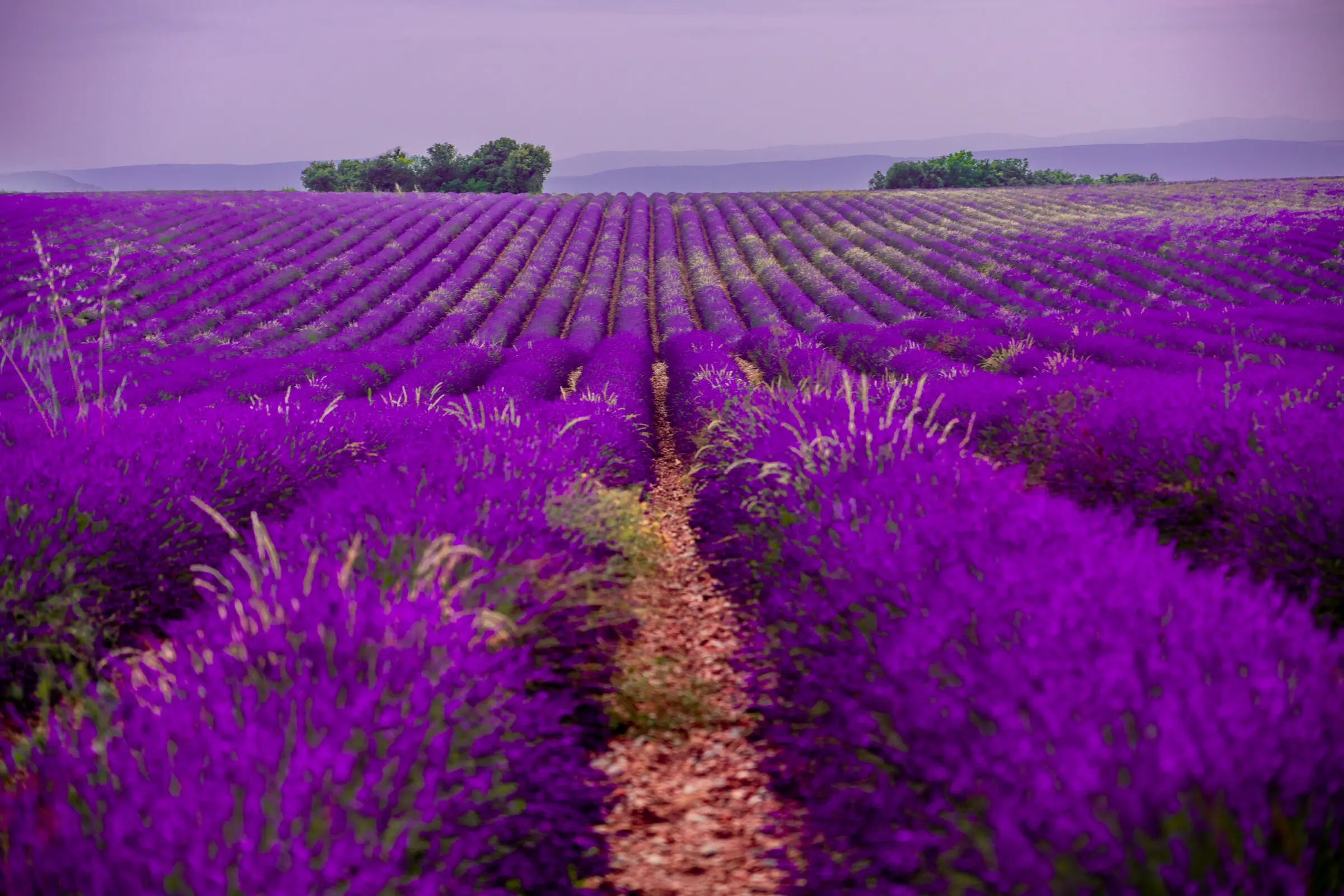
Best Places To Visit in France in The Summer
- Marseille: criminally overlooked, this ancient trade port has the tiniest market share in summer tourism compared to Montpellier and Nice.
- Cassis: cool down on a boat ride through the Calanques National Park followed by a Kir Royale on the seafront.
- Brittany: choose Saint-Malo as a base on this rugged peninsula and plan day trips to Mont Saint-Michel and maritime villages.
- Bordeaux: ringed by vineyards, wine tasting has traditionally driven tourism in this port city. But Bordeaux is also a powerhouse for architecture. Visit in June for the wine festival. For a quieter vacation, pick either spring or fall instead.
- Reims and Epernay: these small towns are the gateway to the Champagne region which is best visited in late spring or early summer before harvest.
- Corsica: early or late summer is the best time to visit France’s Mediterranean island for a mix of swimming and hiking.
- French Pyrenees and the Alps: make for the highlands for fresh air and an abundance of outdoor activities in June.
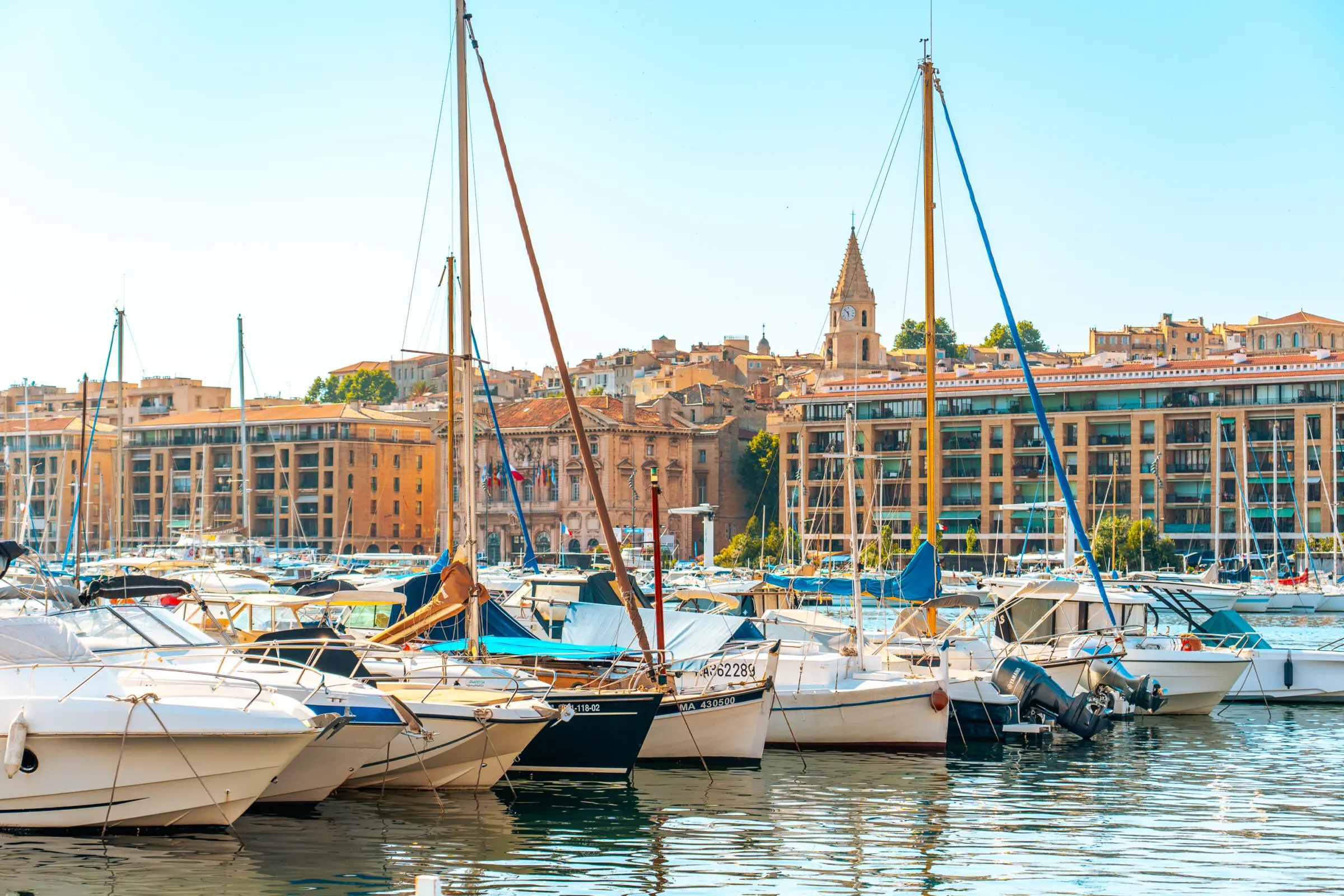
Fall Is The Best Time To Travel To France For Wine Harvest & Autumnal Landscapes
As with other popular European destinations, early fall merges with summer. Temperatures ease to a comfortable territory in the 60s in September, and days usually feel summery. The warm weather allows you to swim in the sea, hike, and pause at sidewalk cafés.
October is Fall Foliage Time
October marks the switch from summer to fall as temperatures drop to the 50s and the air turns crisp. This is the best month to visit France for fall foliage and the opening of seasonal exhibitions.
Enjoy Christmas Markets from mid November
November is the coldest month in the fall, with lows of 39°F and highs of 54°F, while days grow shorter. But it’s far from gloomy – Christmas markets crop up in the second half of the month, and streets are adorned by festive lights until New Year.
Many of the best places to visit in France in spring are as solid an option for fall. The temperatures are comparable, but the seasons progress in reverse, with rain increasing later in fall and sunshine hours slowly decreasing once Daylight Saving Time ends.
Watch out for reduced hours at chateaux and gardens
The key thing to note is that some gardens and chateaux will reduce their hours around the end of October. However, JayWay Travel can help you navigate shoulder and low-season travel in France.
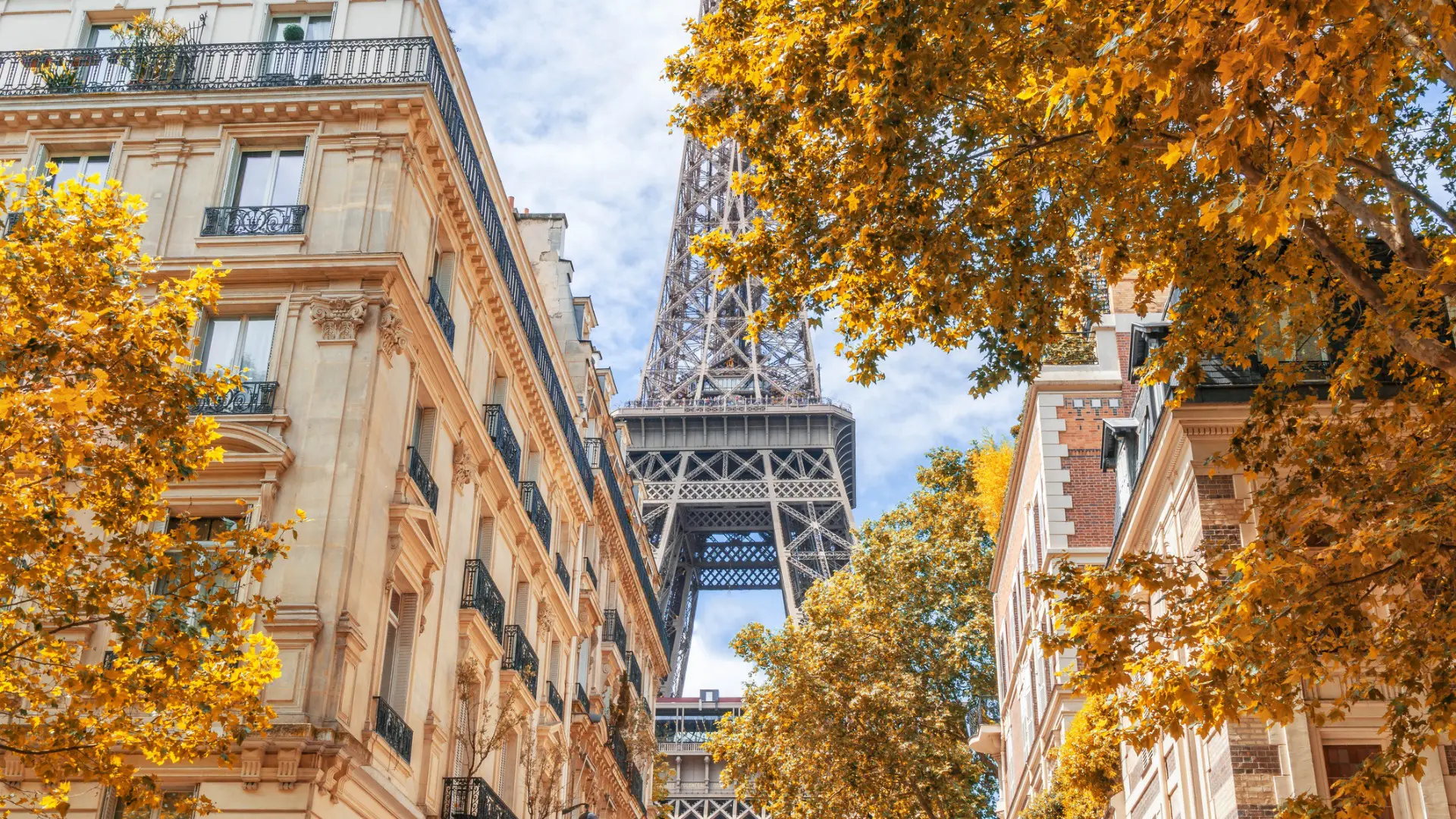
Best Places To Visit in France in The Fall
- Alsace: witness the fusion of French and German architecture in Strasbourg and see the white grape vineyards of Alsace turn golden.
- Bayeux: connect with Normandy’s rich history at the D-Day Beaches and visit the Bayeux Tapestry that chronicles the 1066 Norman Conquest of England.
- Burgundy (Bourgogne): join in the harvest buzz and tuck into regional Coq au Vin. Wine festivals and special events take place in Chablis, Nuits-Saint-Georges, and Chalon-sur-Saone.
- The Dordogne: dotted with chateaux, medieval villages, and vineyards, this pastoral region also features France’s best preserved prehistoric cave art.
- French Basque Country: Bayonne is home to France’s finest chocolatiers where you can try your hand at making chocolate using traditional methods.
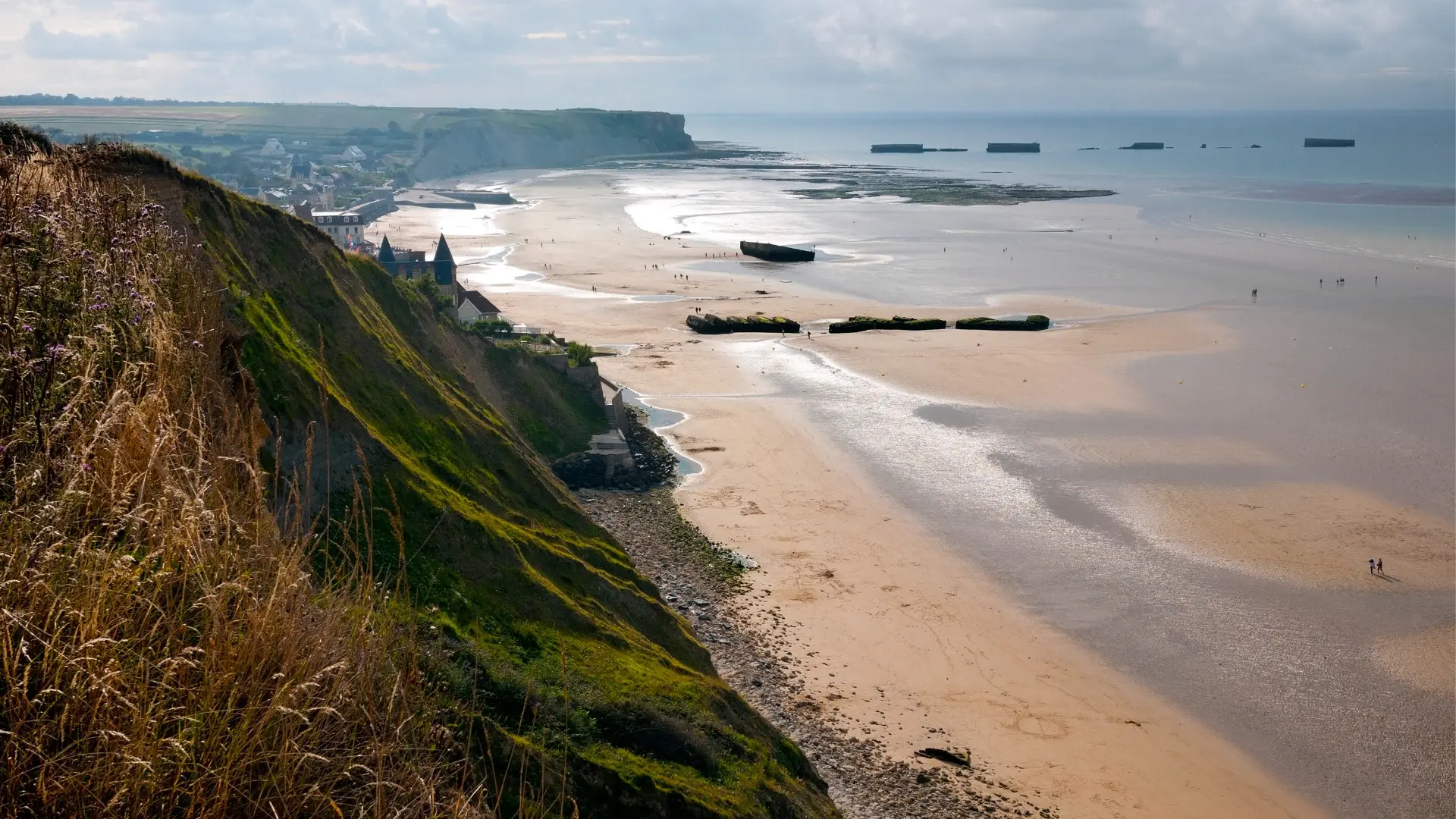
Winter Is When To Visit France For Alpine & Apres Experiences
Winter brings the coldest weather to France with lows hovering around 30°F and highs of 46°F. Snow blankets the highest mountains from the end of November onward. Scatterings are possible in cities in northern France but snow rarely lingers or interrupts travel.
Log Fires and Vin Chaud Fight Back the Cold
Frigid temperatures are buffered by light-festooned cafés, roaring log fires, and steaming mugs of Vin Chaud. Galleries stay open all year and festive markets take the edge of the brisk evenings.
The skiing season runs from December through April. High-elevation resorts such as Val Thorens are more or less guaranteed snow at the start of the season while lower-elevation ski resorts follow suit in January.
Although not widely publicized, France’s mountains harbor a handful of thermal springs, perfect for winter wellness.
The Best Time for Oysters and Truffles
Winter is also an excellent time to visit France for food. Oysters are at their freshest and plumpest while hunting for black truffles in Provence, Burgundy, and the Dordogne is a uniquely immersive experience.
The cooler climate provides an excuse to gorge on classic haute cuisine – the winter edition. Boeuf Bourguignon, Soupe a l’Oignon, and Pot-au-Feu are warming winter dishes while the Apres scene revolves around Raclette.
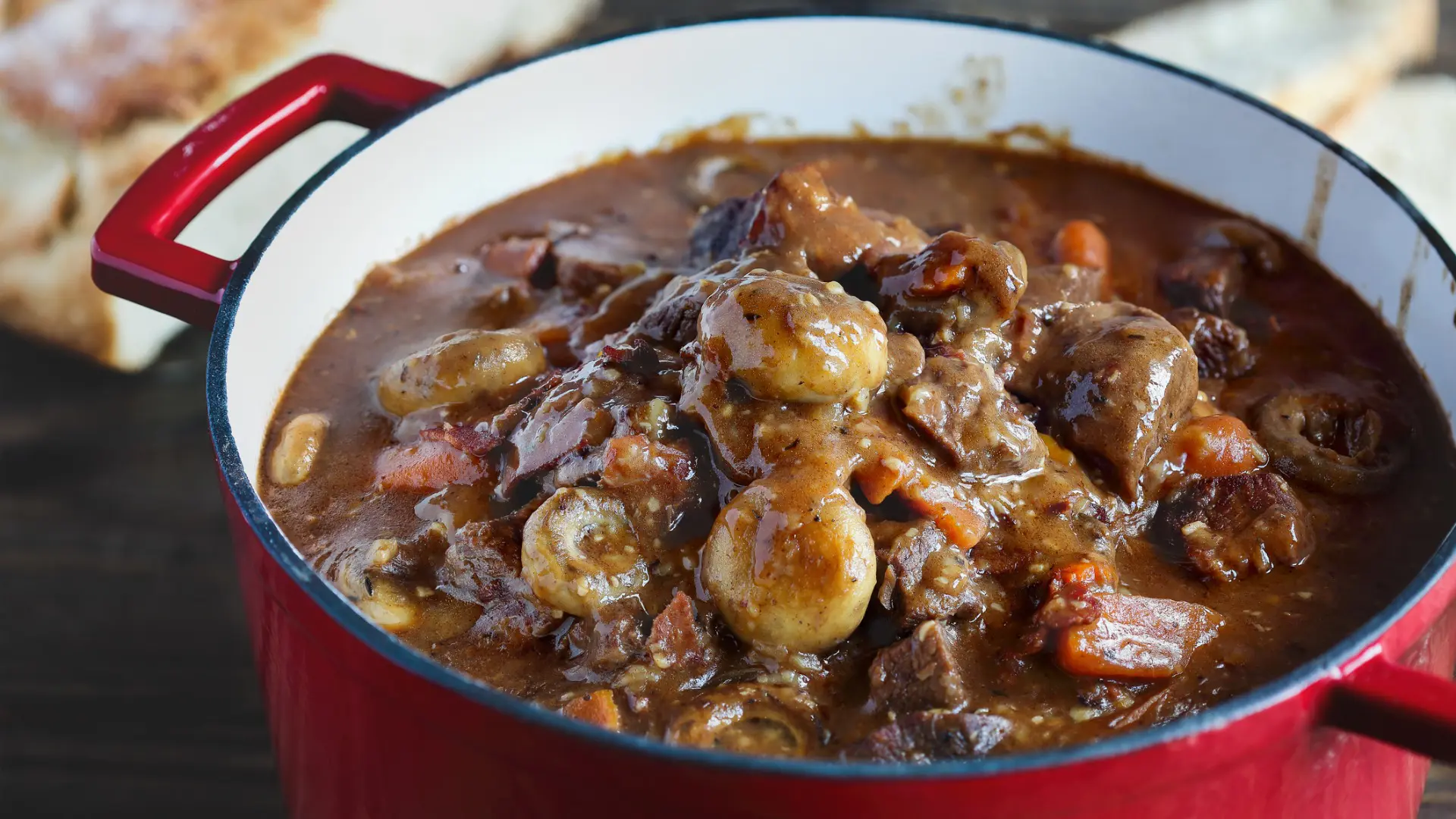
Best Places To Visit in France in The Winter
- Paris: the perennial city wins anyone over with its yuletide markets and magical installations followed by Valentine’s Day wining and dining.
- Chamonix: brushing the Italian and Swiss borders, this alpine resort provides the best views of Mont Blanc and a plethora of winter fun for thrillseekers and non-skiers alike.
- Strasbourg: Jack Frost is kept at bay by the cheerful wooden chalets serving Alsatian Sauerkraut and Spritz Bredele cookies in France’s Christmas capital.
- Lyon: acclaimed and emerging artists collaborate to deliver an illuminated wonderland at the annual Festival of Lights.
- Menton: a lovely extension to a winter sun getaway in Nice, France’s sunniest destination has all the trimmings of a Côte d’Azur resort and boasts the highest temperatures in the winter months.
- French Pyrenees: these snow-capped peaks are peppered with the natural hot springs around Ax-les-Thermes and Fontpedrouse.
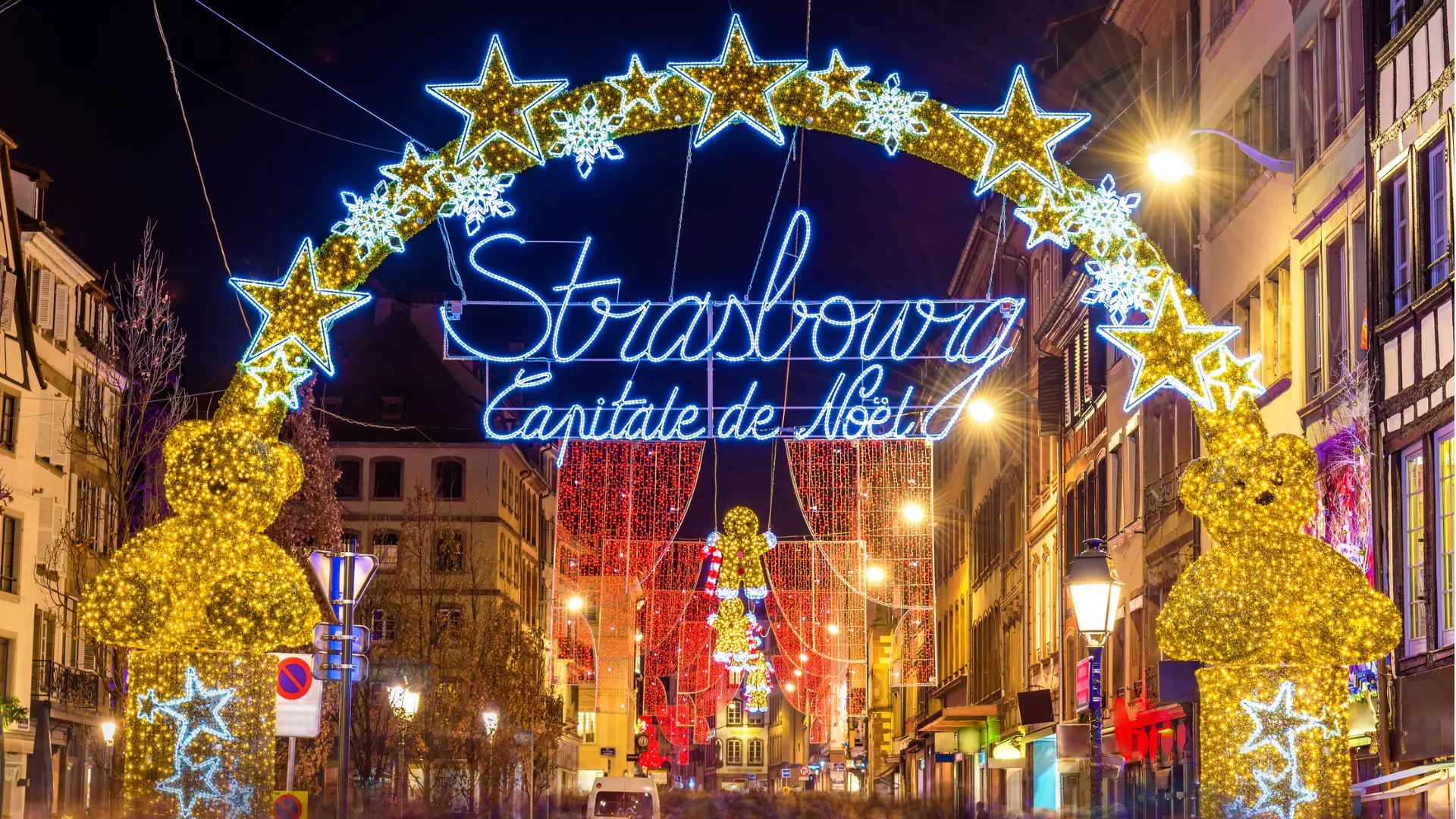
Travel To France Any Time of The Year With JayWay
With all the goodness awaiting you in France all year long, it seems that the hardest task for you is to choose the best time to visit France.
For everything else, rest assured that JayWay will book the finest accommodations and most exciting activities, depending on when you’re visiting France and what type of vacation you have in mind.
Whether it’s a trip dedicated to the City of Light, a quest to walk through the most enchanting lavender fields, or an adventure across France’s castles and vineyards you’ve been dreaming of, our travel experts are sure to plan the perfect France itinerary just for you.

Born and raised in Athens, Maria’s passionate about travel and storytelling, a combination that makes her ideal for her role as our content manager.